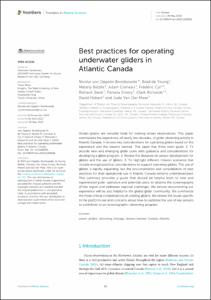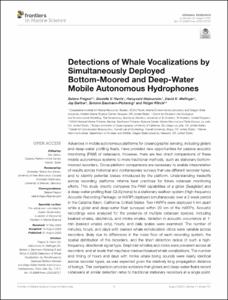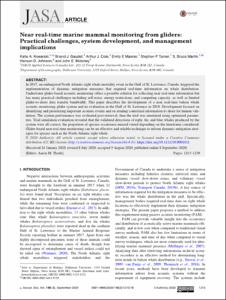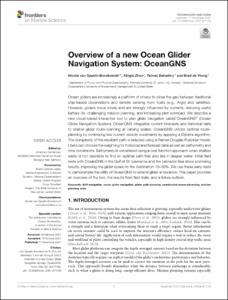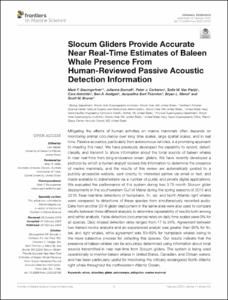Browsing OceanGliders Community Practices by Subject "Data acquisition"
Now showing items 1-7 of 7
-
Air-Sea Gas Fluxes and Remineralization From a Novel Combination of pH and O2 Sensors on a Glider.
(2021)Accurate, low-power sensors are needed to characterize biogeochemical variability on underwater glider missions. However, the needs for high accuracy and low power consumption can be difficult to achieve together. To ... -
Best practices for operating underwater gliders in Atlantic Canada.
(2023)Ocean gliders are versatile tools for making ocean observations. This paper summarizes the experience, of nearly two decades, of glider observing activity in Atlantic Canada. It reviews key considerations for operating ... -
Detections of whale vocalizations by simultaneously deployed bottom-moored and deep-water mobile autonomous hydrophones.
(2020)Advances in mobile autonomous platforms for oceanographic sensing, including gliders and deep-water profiling floats, have provided new opportunities for passive acoustic monitoring (PAM) of cetaceans. However, there are ... -
Near real-time marine mammal monitoring from gliders: Practical challenges, system development, and management implications.
(2020)In 2017, an endangered North Atlantic right whale mortality event in the Gulf of St. Lawrence, Canada, triggered the implementation of dynamic mitigation measures that required real-time information on whale distributio ... -
OceanGliders Oxygen SOP v1.0.0. [GOOS ENDORSED PRACTICE]
(OceanGliders, 2022)This standard operating procedure (SOP) document for dissolved oxygen (DO) aims to guide the user through the steps necessary to collect good quality dissolved oxygen data using ocean gliders for both real time and post ... -
Overview of a new Ocean Glider Navigation System: OceanGNS.
(2021)Ocean gliders are increasingly a platform of choice to close the gap between traditional ship-based observations and remote sensing from floats (e.g., Argo) and satellites. However, gliders move slowly and are strongly ... -
Slocum Gliders Provide Accurate Near Real-Time Estimates of Baleen Whale Presence From Human-Reviewed Passive Acoustic Detection Information.
(2020)Mitigating the effects of human activities on marine mammals often depends on monitoring animal occurrence over long time scales, large spatial scales, and in real time. Passive acoustics, particularly from autonomous ...
 Repository of community practices in Ocean Research, Applications and Data/Information Management
Repository of community practices in Ocean Research, Applications and Data/Information Management

